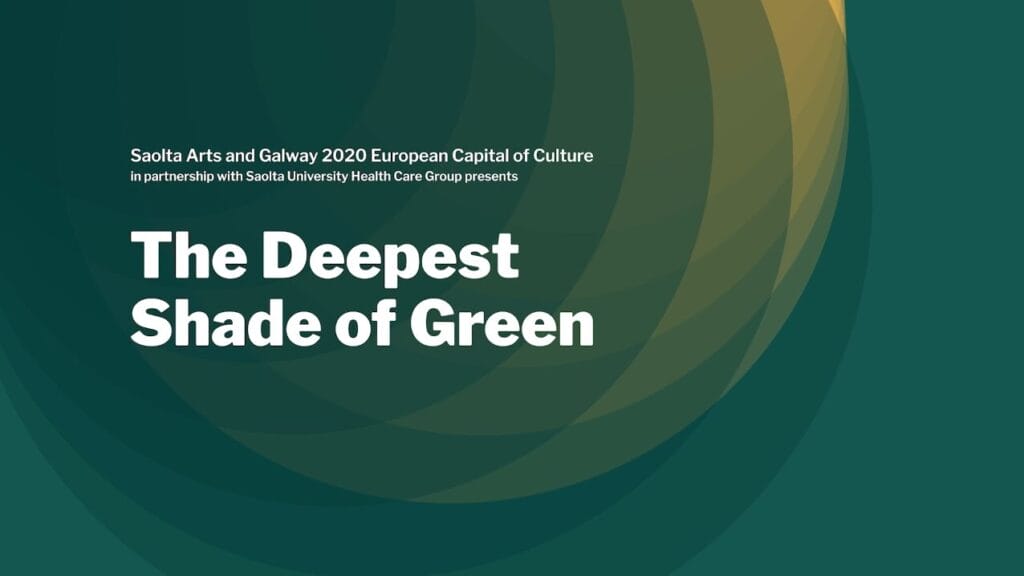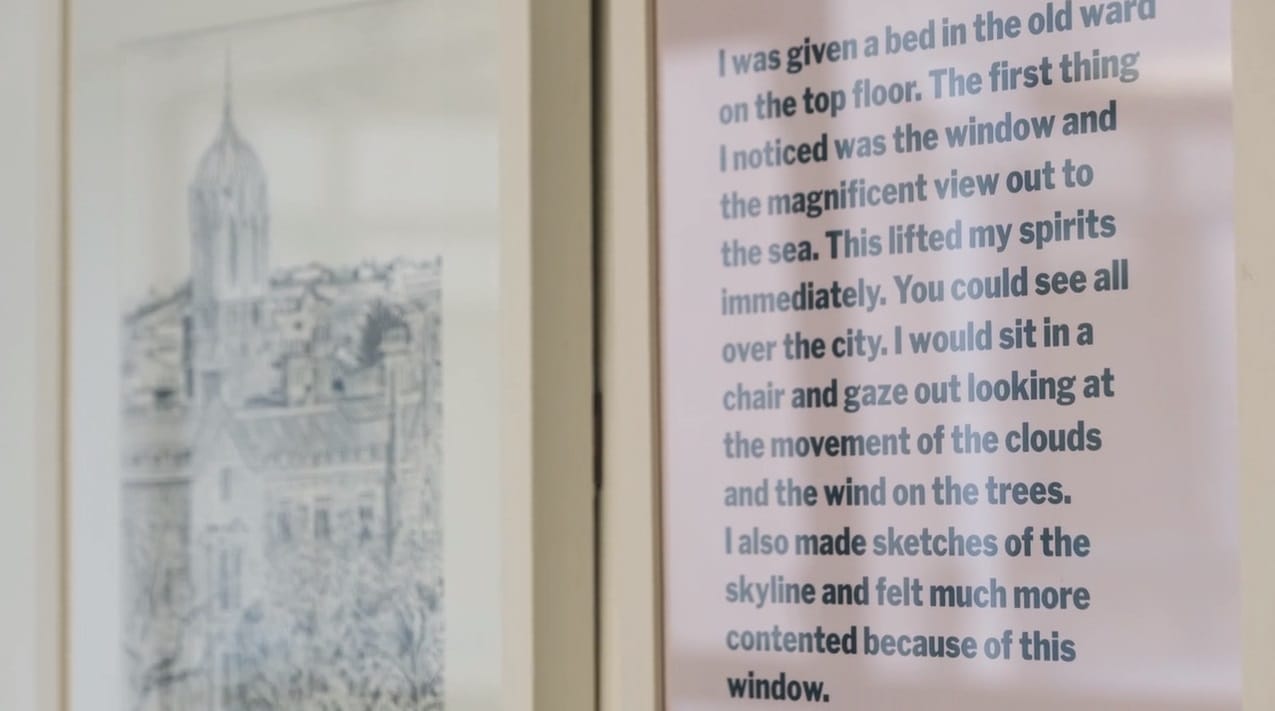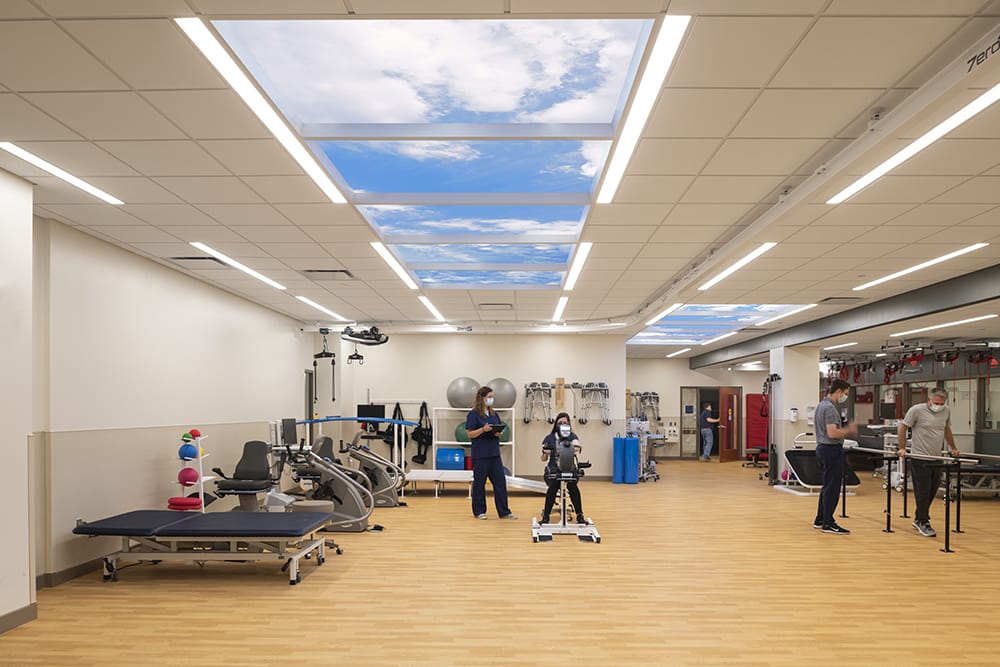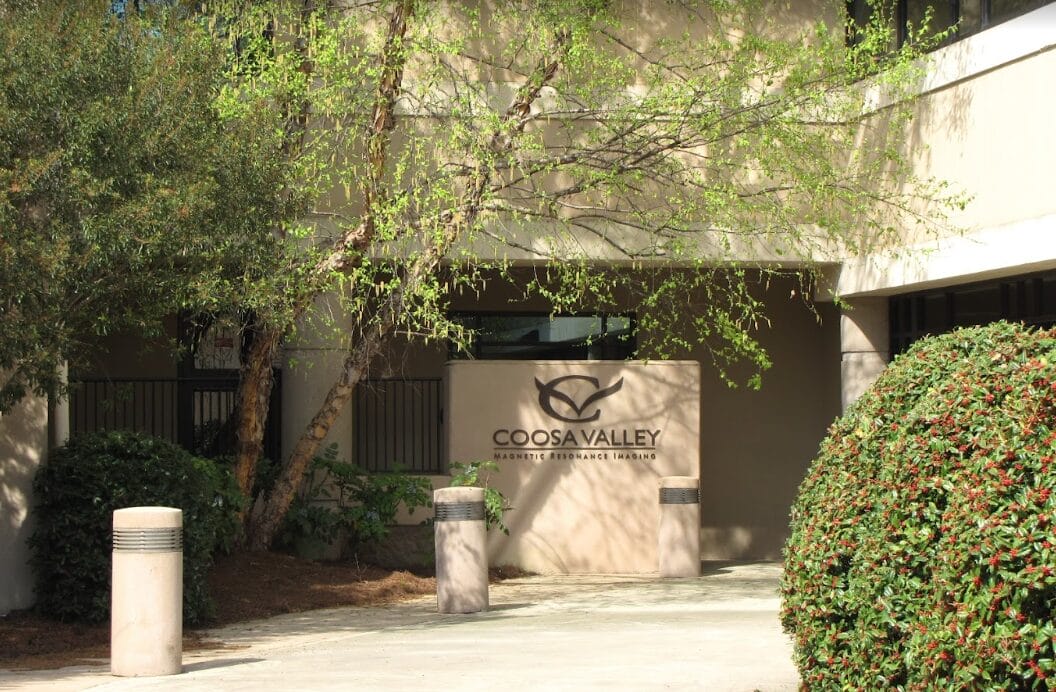For a 2nd consecutive year, Saolta Arts and Galway, the 2020 European Capital of Culture, will sponsor The Deepest Shade of Green, a multimedia arts exhibition at University Hospital Galway, in Ireland’s western coast. The exhibit explores the healing contributions of nature’s presence, real or symbolic, as well as related artistic interpretations in clinical settings.
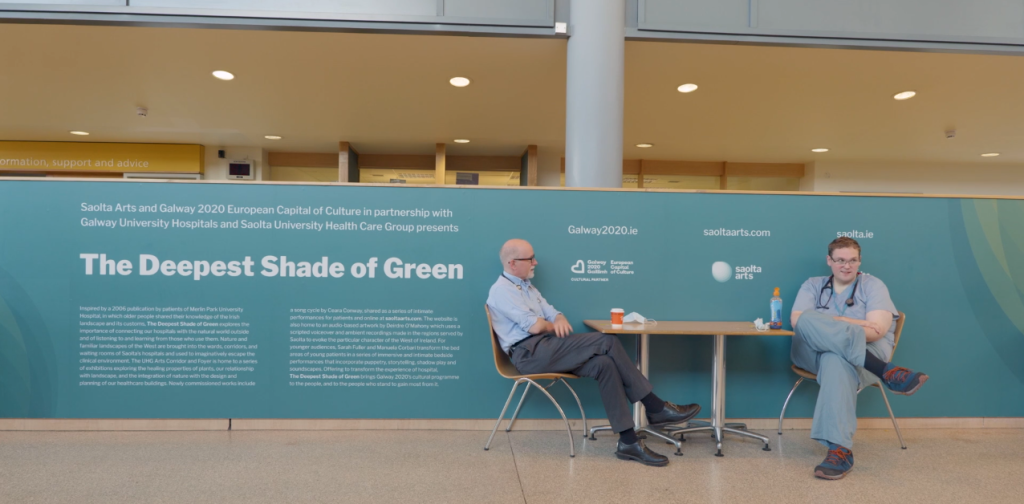
“A Deeper Shade of Green takes its title from a publication of writing by older patients at Merlin Park University Hospital who share a deep knowledge of the Irish landscape and its customs,” says Marielle MacLeman, Saolta Arts curator.
“Inspired by this, the central themes of our program for Galway 2020 European Capital of Culture were the importance of connecting our hospitals with the natural world outside and of listening to and learning from those who use them.”
“Through a series of commissioned artworks and exhibitions, nature and familiar landscapes were brought into the wards, corridors, and waiting rooms of Saolta’s hospitals, helping people to imaginatively escape the clinical context, or to reconnect with the places and things that matter to them,” notes MacLeman.
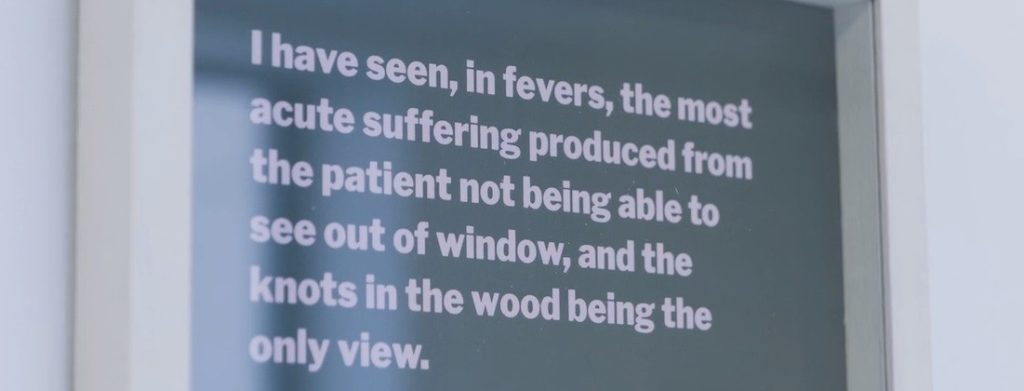
While 2021’s exhibition will again be limited to resident patients and working staff due to the SARS-CoV2 pandemic lockdown protocol, the event has attracted attention beyond its borders. The internal event showcases global exemplars of biophilic design for healthcare through curated photography and commissioned artwork, as well as musical performances, poetry readings and testimonials.
At its root, The Deepest Shade of Green exhibit enables patients share their journey to health through perseverance, empathy, and friendship, as well as through acceptance, faith, and closure. In addition, staff members at the hospital we are also invited to contribute their own experiences caring for and witnessing a patient’s personal journey.
Inspired by Florence Nightingale’s Notes on Healing (1859) whose observations about the environmental effects on patient wellness led her to underscore the therapeutic benefits of beauty and color, the exhibit highlights these attributes in a variety of ways. At the heart of the exhibit lies a poignant letter from a patient describing the impact of her surroundings at different stages of her cancer journey and the significance of her bedside view on the top floor of University Hospital Galway.
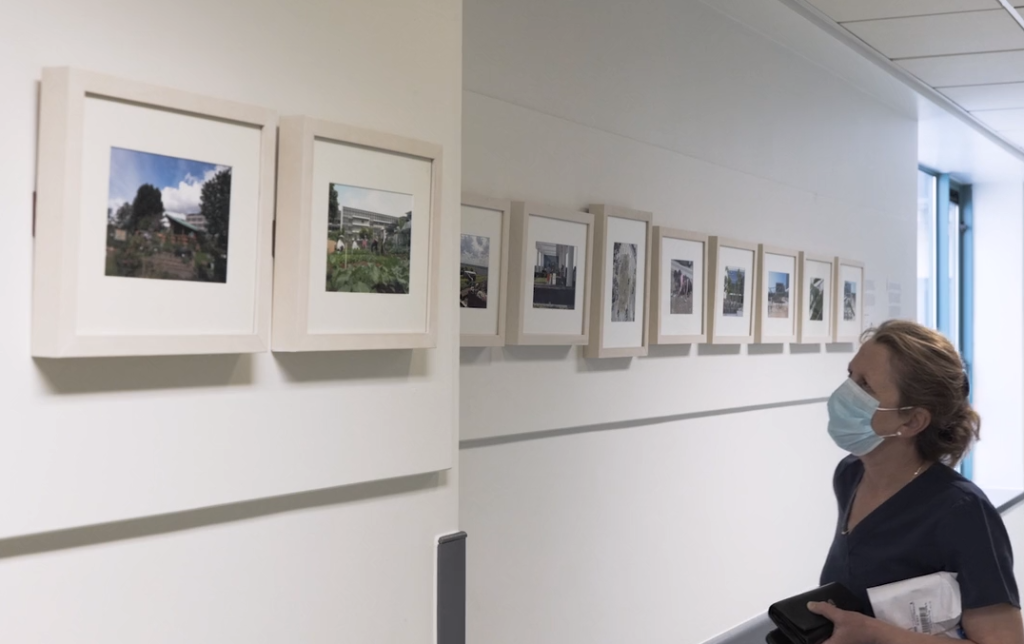
“For the closing exhibition of the program, we specifically wanted to look at how nature can be physically incorporated in healthcare buildings to improve the experience of those occupying them. Drawing together examples of biophilic design, art installations, and hospital gardens from around the world, it presents inspirational clinical settings where nature prevails,” says MacLeman.
“I was already aware of Sky Factory’s work from researching our own environmental improvements at Galway’s public hospitals but rediscovered the company online when I began reading up on Biophilia for the show. Margaret Flannery, Arts Director of Saolta Arts, had also attended Sky Factory’s presentation [on Cognitive Biophilia] at the European Healthcare Design Conference in London,” she notes.
“Around that time, Margaret had received a letter from a patient describing how the sensory environment of each hospital admission during their cancer journey had been their ‘tipping point’ into despair or coping. The letter reflects on the significance of having a view from a window in an old ward during one hospital stay, and contrasts this with a visit to a newly built ward with no such visual stimulus.”
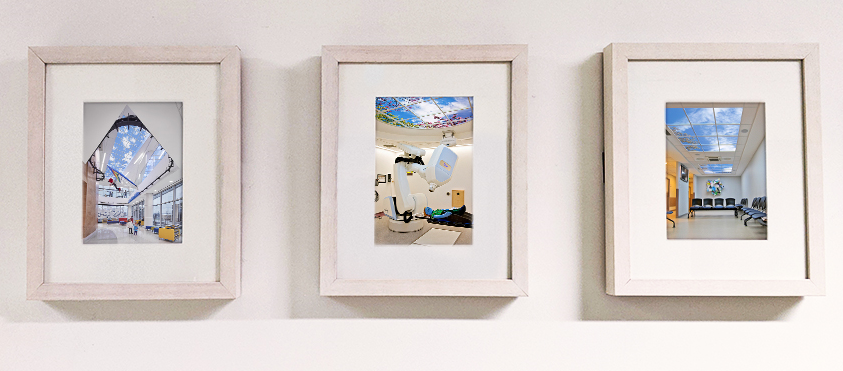
“The patient notes how their ‘spirits lifted immediately’ and that they ‘felt much more contented because of this window’ and of being able to ‘gaze out looking at the movement of the clouds and the wind on the trees’. A patient made sketches of this skyline during their hospital stay and drawings evolved from these sketches are included in the show.”
MacLeman explained that the Sky Factory collection was hung next to a photograph by Rory Daniel depicting the ingenious ward layout at Ng Teng Fong General Hospital in Singapore. This hospital surpasses traditional healthcare models by opening the standard ward floor plan like the wings of a bird and giving every patient a window and garden view.
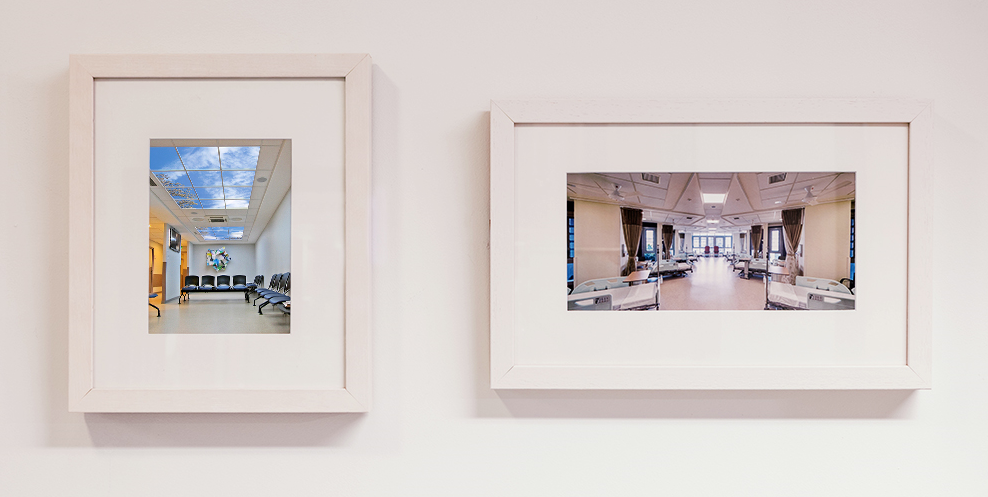
The hospital’s innovative plan creates a semi-private corner for each bedspace with its own operable window, connecting patients with nature despite the building’s urban setting. “I felt that the Sky Factory installations and this made for a fitting grouping alongside examples of visionary architecture from Switzerland that prioritize views of sky and nature for patients,” says MacLeman.
“Despite these inspirational buildings, the sad fact is that so many healthcare builds do not consider the importance of this interface between the natural and clinical worlds and that is why I think Sky Factory’s work is so valuable––ensuring that our healthcare buildings need not be the stark, sterile spaces of the past,” MacLeman notes.
Saolta Arts selected three Sky Factory installations for inclusion in this year’s exhibit: Erlanger Children’s Hospital in Chattanooga, Tennessee (USA); the Marie Curie Radiotherapy Center in Arras, France; and The Royal Marsden Cancer Centre in London, United Kingdom.
Other notable facilities showcased in the exhibit include REHAB Basel, a Swiss rehabilitation center for people with spinal cord and brain injuries where the curved, hollow ceilings of patients’ rooms house transparent plastic spheres two meters (6.5’ feet) in diameter, offering patients a view of the sky from their beds.
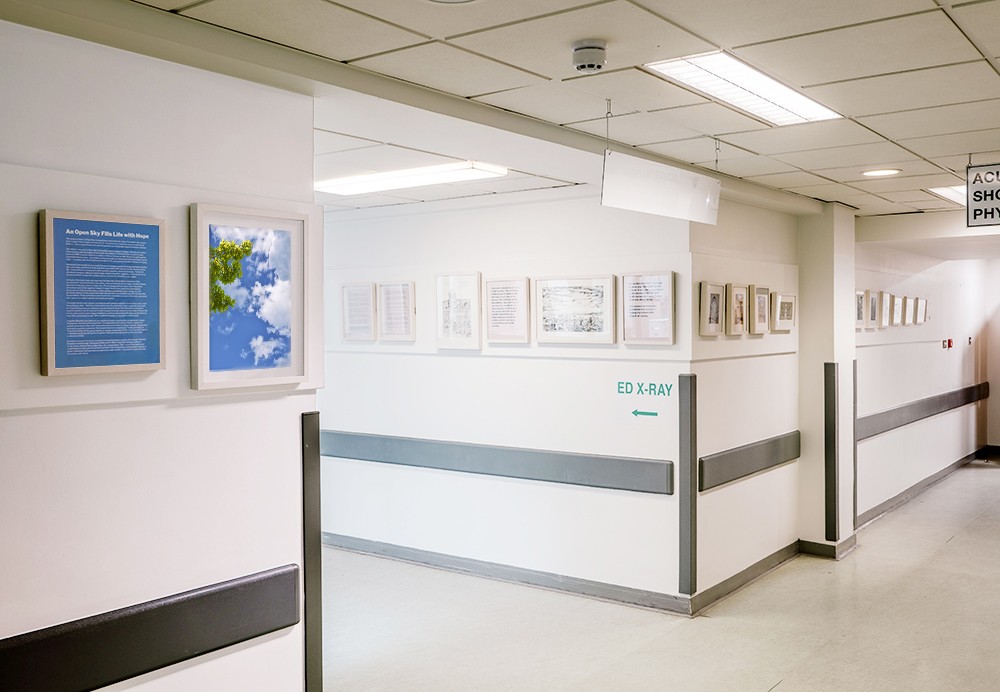
The exhibit includes an introduction to Sky Factory’s Open Sky Compositions, the only illusory sky installations to have been the subject of published, peer-reviewed studies validating their positive outcomes on patient wellness. Sky Factory’s biophilic illusions of nature engage areas of the brain involved in spatial cognition and depth perception.
“Whilst ongoing visiting restrictions preclude public access,” notes the exhibit’s web site, “the exhibition will serve as a research document to garner support for the integration of green spaces in future builds ensuring that, in the wake of a pandemic, our hospitals of the future need not be the stark, sterile environments of the past.”
The Deeper Shade of Green exhibit opened March 29th and has been extended to run through May 31st.
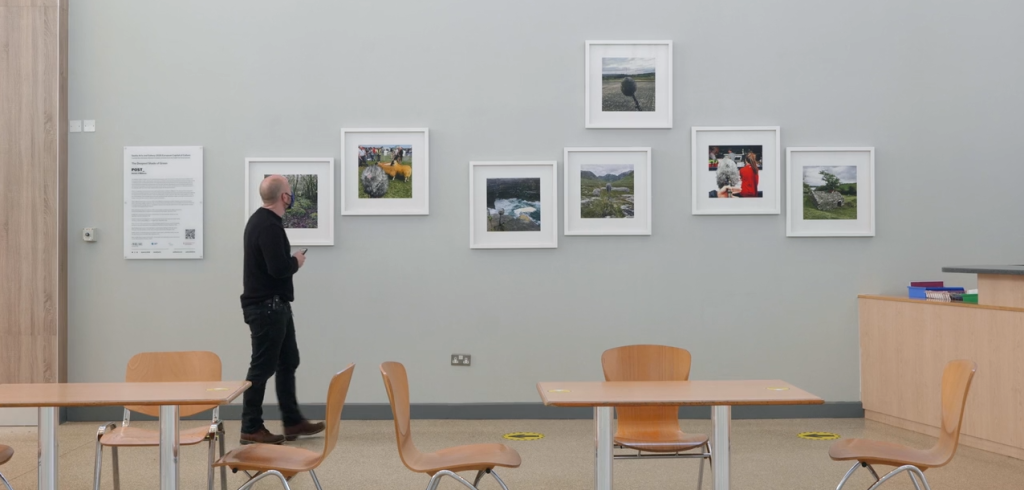
Galway, in Ireland’s western coast, shares the 2020 European Capital of Culture title with Rijeka, in Croatia. The European Capitals of Culture (ECC) are one of the most recognized programs of the European Union. The program selects one or two regions every year and places them at the heart of cultural life across Europe.
Although Galway and Rijeka were selected as the ECCs for 2020, last December the European Parliament adopted a proposal by the Commission of the European Union to extend the title until April 2021 due to the effects of the pandemic.

The Saolta University Health Care Group consists of University Hospital Galway, Merlin Park University Hospital, Portiuncula University Hospital, Roscommon University Hospital, Mayo University Hospital, Sligo University Hospital and Letterkenny University Hospital.
